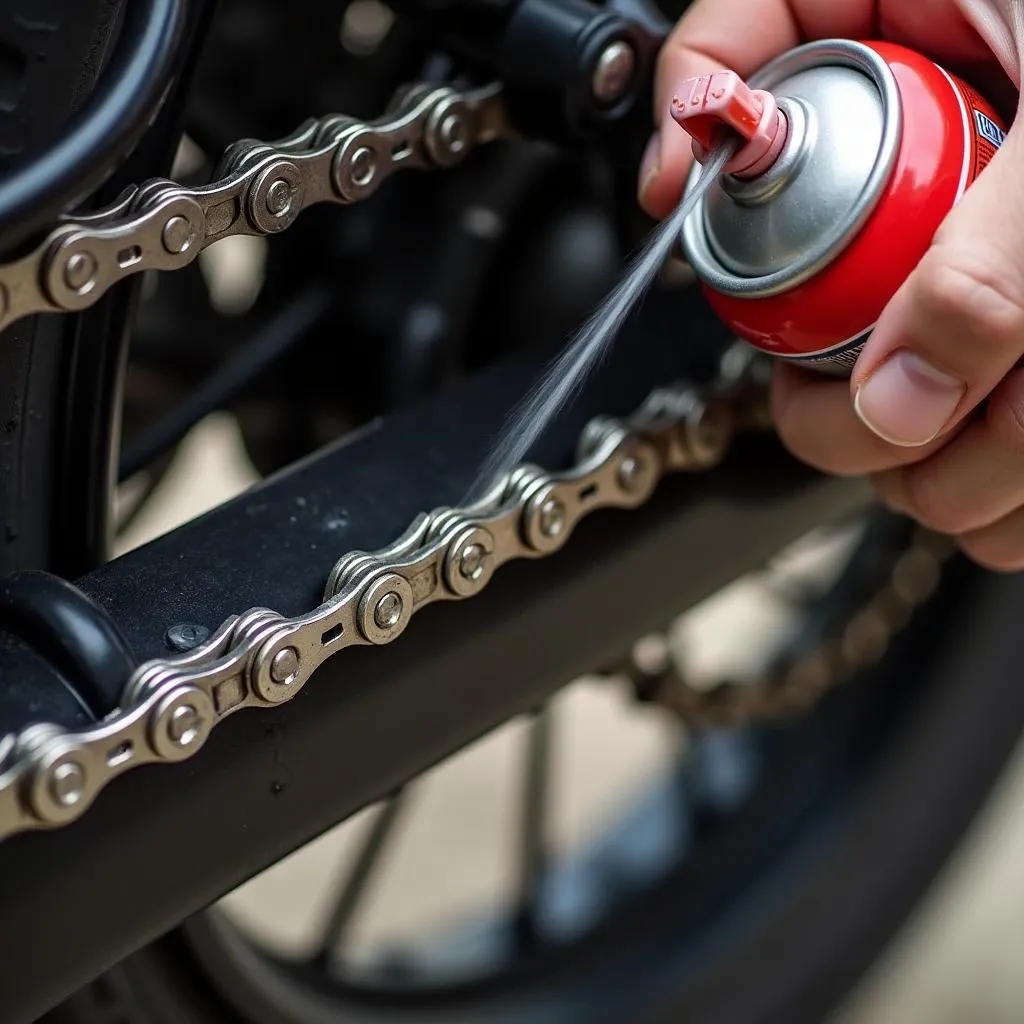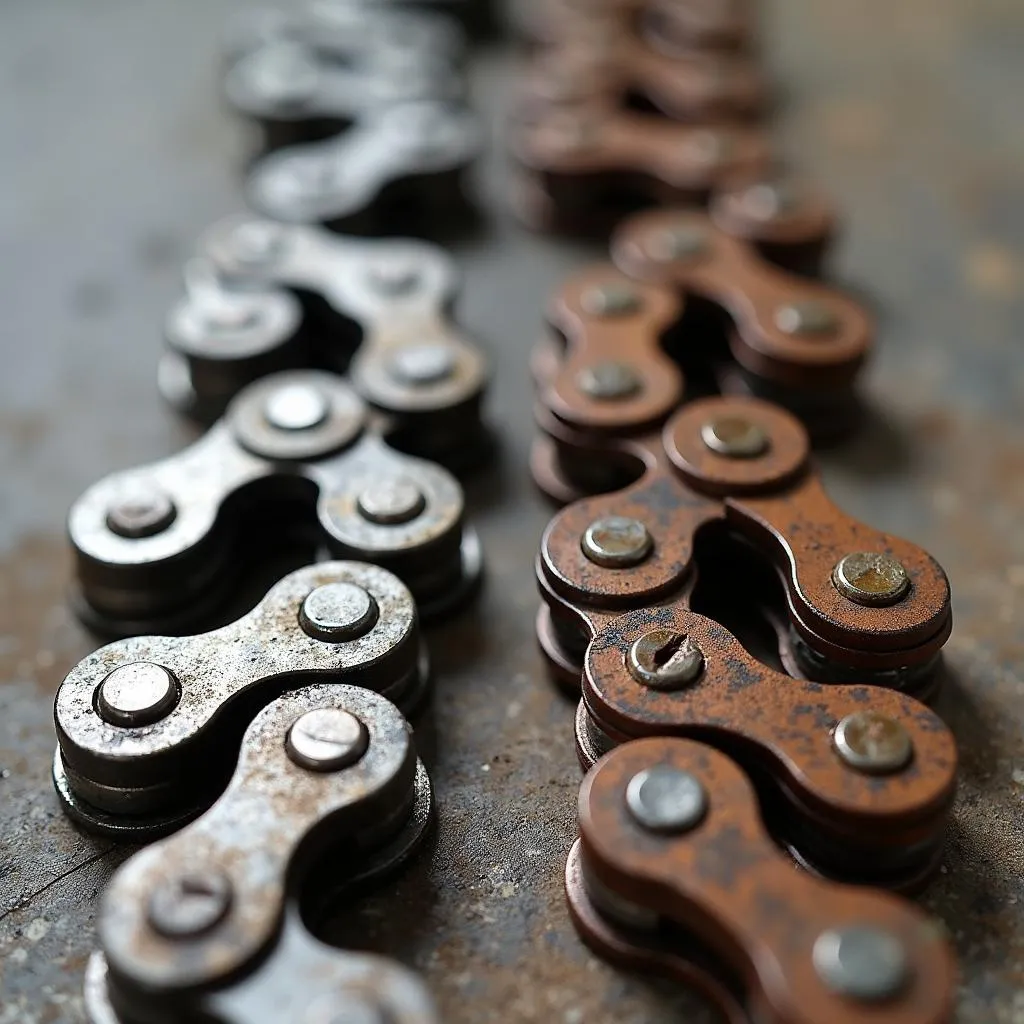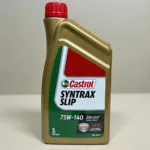Motorcycling – a feeling of freedom and adventure. But like any machine, our beloved two-wheeler requires regular care. An often-neglected aspect is chain lubrication. How often do you actually have to oil your motorcycle chain? And why is it so important? This guide provides you with the answers and offers valuable tips for bikers.
The Importance of Chain Lubrication
Your motorcycle’s chain is a high-performance part that is exposed to enormous forces. To ensure smooth running and optimal power transmission, adequate lubrication is essential. However, friction generates heat and abrasion, which damage the chain in the long run. This is where chain lube comes into play.
What Does Chain Lube Do?
Chain lube has several important tasks:
- Reduction of Friction and Wear: A high-quality chain lube forms a protective film between the chain links, rollers, and sprockets. This minimizes friction and prevents excessive wear.
- Protection Against Corrosion: Moisture and dirt are the greatest enemies of any motorcycle chain. Chain lube effectively protects against rust and maintains the chain’s flexibility.
- Improvement of Running Properties: A well-lubricated chain runs smoother and quieter. This increases driving comfort and protects the entire drive unit.
 Lubricating a motorcycle chain
Lubricating a motorcycle chain
How Often Should You Oil Your Motorcycle Chain?
The question of the optimal frequency of chain lubrication cannot be answered in a general way. Various factors play a role here:
- Driving Style: Those who frequently travel long distances on the highway need to oil their chain more often than someone who mainly takes short trips in the city.
- Weather Conditions: Rain, snow, and road salt put more strain on the chain than dry weather.
- Chain Lube: There are different types of chain lube, each with different properties and service lives.
However, as a rule of thumb:
Lubricate your motorcycle chain every 500 to 800 kilometers or after every ride in the rain at the latest.
Signs of Inadequate Chain Lubrication
Pay attention to the following signs that indicate inadequate chain lubrication:
- Unusual Noises: Squeaking, cracking, or rattling in the chain area.
- Heavy Chain Wear: Visible signs of wear on the chain links and rollers.
- Rust Formation: Reddish deposits on the chain, especially on the chain pins.
 Worn motorcycle chain showing signs of wear
Worn motorcycle chain showing signs of wear
How to Lubricate Your Motorcycle Chain Correctly
- Preparation: Place your motorcycle on a level surface and place a tarpaulin or cardboard underneath to avoid soiling.
- Cleaning: Remove coarse dirt with a brush and chain cleaner.
- Drying: Allow the chain to dry completely after cleaning.
- Applying Chain Lube: Spray or drizzle the chain lube evenly onto the inside of the chain while slowly rotating the rear wheel.
- Soak Time: Let the lube soak in for a few minutes before removing excess lube with a cloth.
Tip: It is best to lubricate your chain in the evening after the last ride. This allows the lube to soak in optimally overnight.
Choosing the Right Chain Lube
Various types of chain lube are available on the market:
- Spray Lube: Easy to use, but tends to splash more.
- Drip Lube: Allows for more precise application, but is a little more complex to handle.
- Adhesive Lube: Specially developed for use under extreme conditions, adheres particularly well to the chain.
When choosing chain lube, pay attention to the manufacturer’s recommendations and the operating conditions.
Conclusion
Regular chain lubrication is essential for the service life and functionality of your motorcycle chain. Therefore, invest in a high-quality chain lube and take the time for maintenance. This way, your bike will always be available for unforgettable rides.
Further Questions About the Motorcycle Chain
- Which chain lube is the right one for my motorcycle?
- How can I extend the life of my chain?
- When does the motorcycle chain need to be replaced?
Visit our website autorepairaid.com for more exciting articles and useful tips on repairing and maintaining your motorcycle. Our team of automotive experts will be happy to help you with advice and assistance if you have any questions.

